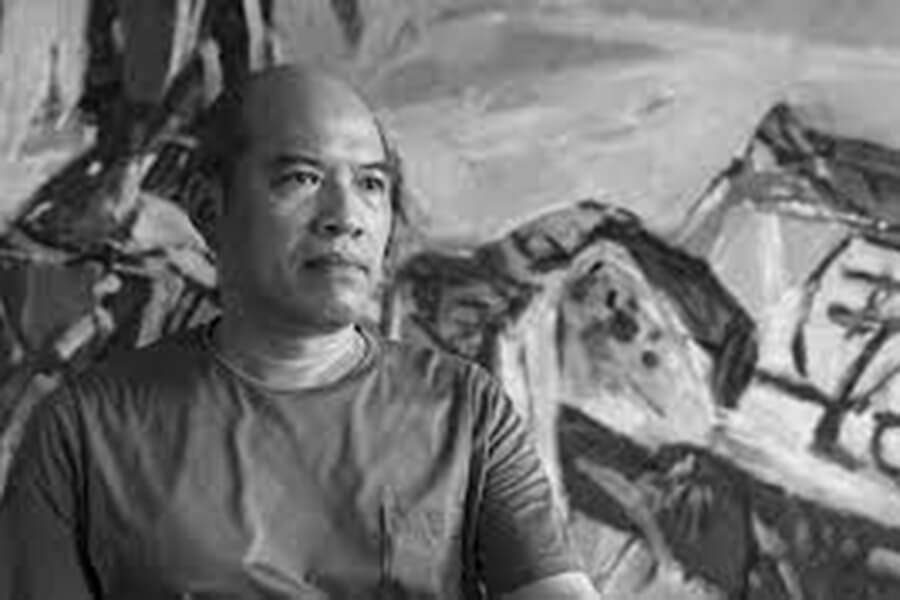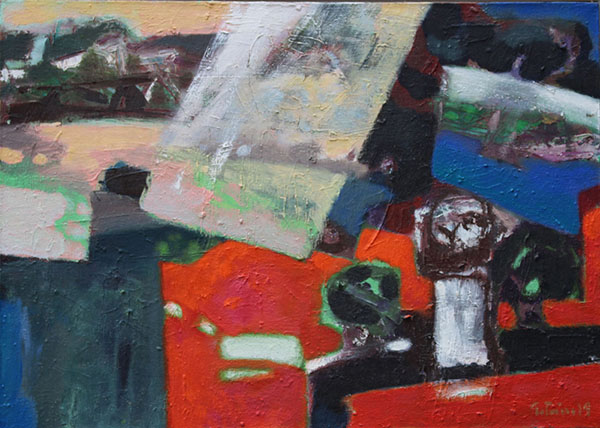
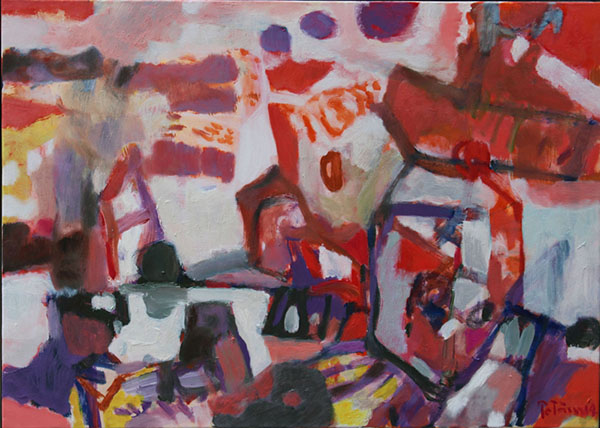 PREFACE: When I was about 10 or 11 I had a teacher who was a bit of a bohemian in what was a very conservative profession. She used to send her hard earned cash on good art reproductions of abstract expressionist painters and put them on display, one at a time, in the classroom. One day she caught me daydreaming, again, and asked what I was up to. I truthfully said that I was looking at the reproduction to see the story inside the paint. She asked me how many stories I’d seen so far and I said about four. She smiled and let me keep daydreaming for the rest of the year.
PREFACE: When I was about 10 or 11 I had a teacher who was a bit of a bohemian in what was a very conservative profession. She used to send her hard earned cash on good art reproductions of abstract expressionist painters and put them on display, one at a time, in the classroom. One day she caught me daydreaming, again, and asked what I was up to. I truthfully said that I was looking at the reproduction to see the story inside the paint. She asked me how many stories I’d seen so far and I said about four. She smiled and let me keep daydreaming for the rest of the year.
The above is a real painting that I spent a fair bit of time enjoying and making stories about, this week, at Dong Phong Gallery. It’s by an established artist Do Minh Tam.
Later I discovered that the work has been titled COASTAL VILLAGERS and my experiences living in Vietnamese coastal villages gave the painting a stable focus.
Dilemma: If I was going to purchase the 50x70cm work for its very reasonable $1 000 price, would I prefer to buy it without knowing the title and hang it on a wall so that I could daydream into it and make up stories? Or would I prefer to know the name and have it’s stories constrained?
As soon as I saw a promo picture for Do Minh Tam’s exhibition I knew that I was probably going to like its content and as soon as I walked inside I certainly did! I got sucked and stayed.
I was glad that I hadn’t read the exhibition’s name so that my childhood predilection remained intact and I was also glad that the names of the paintings were not visible (they’re on little stickers on the sides of the frames)
But for those who like a reference point straight away the exhibition is called TOWNSCAPES and for those who like a figurative narratives, they can probably pull stories-as I call them- out of the paintings that contain people and/or landscapes…as in this 40x50cm piece.
DELVING BACK: Here’s a good a space as any in this opinion piece to retreat a couple decades!
In 1997, in World Art Vol No 12, a list of Vietnamese artists to watch out for in the future was published and singled out were Truong Tan, Thanh Chuong, Minh Thanh, Thiet Cuong, Pham Viet Hong Lam, Vu Thang, Vu Dan Tan, Do Minh Tam, Le Tuan Anh, Mai Chi Thanh, and Tran Quang Huy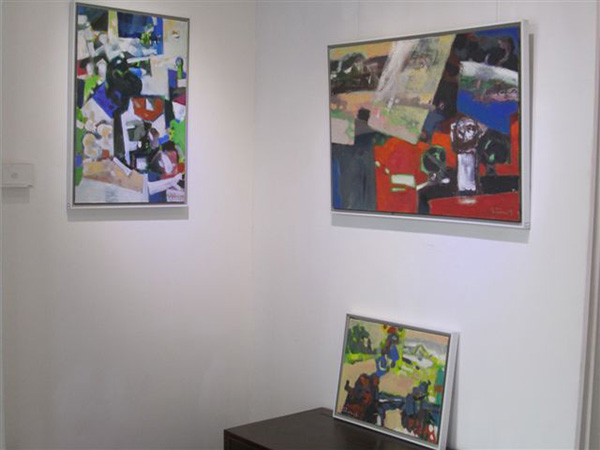
Almost two decades later some of these would still feature very prominently in a who’s who in Vietnamese art history and one of them now has a small but excellent showcase at a particularly small but particularly excellent gallery, Dong Phong.
Do Minh Tam (born 1963) was into abstract expressionism and like a lot of artists in their glorious youthful days liked to put forward big canvasses of luscious and nicely gestural brushwork. His early work was sometimes compared with the pre-drip work of Jackson Pollock and his later thick layering technique was compared to later De Kooning. But if we really want to stay in a comparison rut I like to put Joan Mitchell (the artist, not dear old Joni who shared the same time frame and was on both sides now and then) into the equation
Joan, who called herself the ‘last abstract expressionist’ –probably referring to the much hyped New York School- also said that ‘Abstract is not a style. I simply want to make surface work. This is just a use of space and form: it’s an ambivalence of forms and space’. Mitchell preferred to retain a more traditional sense of figure and ground in her pictures and she often composed them in a way that evoked impressions of landscapes.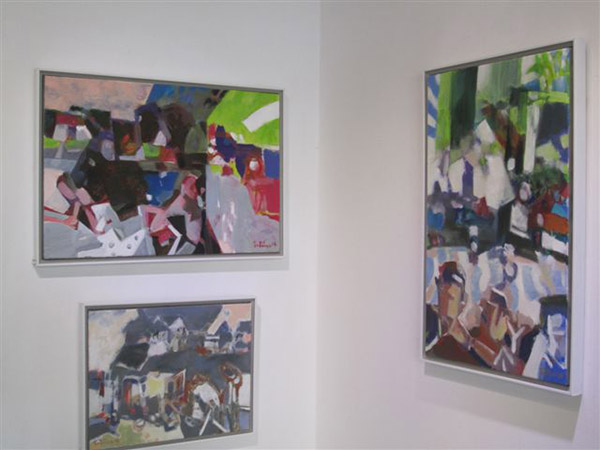
I can observe her philosophy in the early work of Do Minh Tam -though he sometimes included a figurative aspect as exampled in Street Vendor and Father and Son.
Do Minh Tam had a solo exhibition at Hanoi Studio Gallery in 2008, one decade after his pronouncement as one of the Turks to anticipate. The gallery statement is an interesting read:
‘Do Minh Tam may be regarded as representative of the Northern Abstract – Expressionism with his daring, sensory perception – based style, his exploitation of bursting whirls and glowing strokes, his use of strong colors to express dynamism and inspiration within a tightly thought out composition. His style also reflects, to a certain extent, the difference between the Northern abstract language, which is more about Expression – Dynamics and that of the South, which leans more towards Flat structure – passivity. This difference can partly be rationalized as a function of the influence of the geography and climate of each region on the psyche and emotions as well as on the aesthetics of their residents. The North has four clearly defined, constantly changing seasons, which are far harsher than the climate of the South. The Northern geography is littered with inaccessible mountainous areas, in direct contrast with the flat, open delta area settings of the South. Opinion has also been voiced that the Northern artists move towards dynamism to escape from their slow, stagnated living environment while the Southern artists seek a serene structure to satisfy their search for tranquility and relaxation in order to escape from an industrialized urban environment.’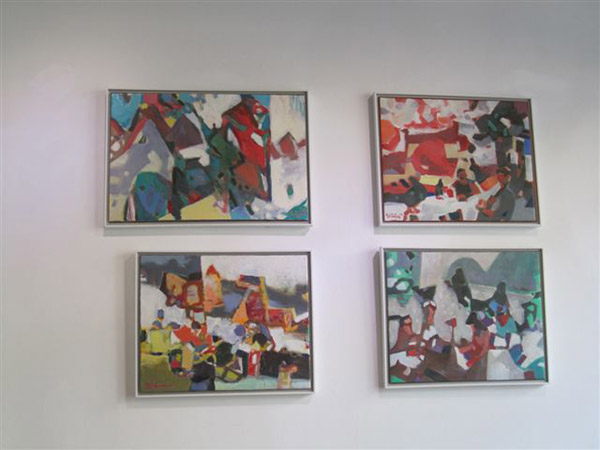
FAST FORWARD to the here and now and Dong Phong until January 16:

